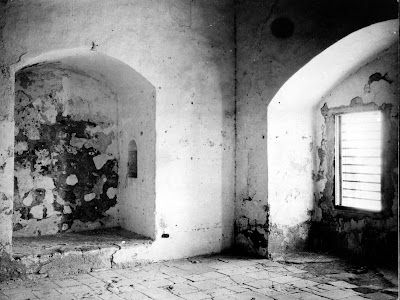Behind the scenes

A couple of weeks ago, we were treated to a behind the scenes view of the restoration and maintenance of the Baha'i Holy places in Israel. The talk, held at the Baha'i Centre of Learning in Perth, was given by Kamran Yazdani who is the Manager of the Restoration and Maintenance of Historic Buildings Department at the Baha'i World Centre, where he has been serving for 16 years. The audio-visual presentation he shared was one that he initially prepared for the 700 or so staff serving at the Baha'i World Centre in Haifa.

While we were on pilgrimage, we were told a bit about the restoration process at some of the Holy places, but we didn't fully appreciate the enormity of the work undertaken to restore and maintain these buildings. There are teams of dedicated staff serving at the Baha'i World Centre, each in their specialised fields. The gates shown above are an example of the many things fabricated in the various workshops, some items taking many months to complete. Being next to the coast, corrosion is a major problem and all steel work and fittings are being replaced with stainless steel wherever possible. Having done some blacksmithing, I appreciated the workmanship in pieces such as these gates - little did I know that they were forged from stainess steel which is much harder to work with than wrought iron and takes at least twice as long.
The prison cell during restoration

The prison cell after completion of renovations

The building known as the Western Pilgrim House on Haparsim Street in Haifa
The Western Pilgrim House after completion of renovations
In the years between the two photos above, the old Western Pilgrim House had deteriorated to the point where restoration involved replacing the entire roof and floors and all the fittings.
All of the renovations undertaken of the Holy Places involve quite extensive research in order to be able to restore the buildings as closely as possible to the way they were during the time of Baha'u'llah. Often this involves painstakingly removing layers of paint, or newer layers of plaster or render in an attempt to find the original surface. Sometimes only fragments remained, which were then analysed to exactly reproduce the type of plaster or render that was originally used. On occasion, unknown features were revealed such as an original patterned stone floor or some ornate plaster work. Early photos are a precious resource as they often give clues as to how buildings and gardens originally looked. The garden in the courtyard of the House of 'Abdu'llah Pasha (a significant house occupied by Baha'u'llah's son and appointed successor, 'Abdu'l-Baha, for thirteen years), below, was rebuilt using one such photo.
 An early photo of the House of 'Abdu'llah Pasha in Akka
An early photo of the House of 'Abdu'llah Pasha in Akka The House of 'Abdu'llah Pasha after restoration and with newly replicated garden
The House of 'Abdu'llah Pasha after restoration and with newly replicated gardenMany hundreds of people are diligently serving at the Baha'i World Centre working on these projects. Some, such as a dedicated team of painters, serve for a few months each year, while others are there from between eighteen months to many years. So a very big thank you to all those who give their time restoring and maintaining these Holy Places.
Labels: 'Abdu'l-Baha, Akka, Baha'i, Baha'i holy places, Baha'i pilgrimage, Baha'i World Centre, Baha'u'llah, Haifa, Israel



1 Comments:
Do I detect an Andrew contribution? A very interesting account of maintenance and restoration work. Did you get to see the forges used in the stainless steel work? Now you have made the start, How about an account, with photos, of the cymbal making. We also enjoyed the high altitude photos. Gives a surprising insight into the topography of the countries you flew over. You don't always equate snow with Turkey but I guess the water for the Jordan, Tigris and Euphrates has to come from somewhere! Lots of love to you both, M&D.
Post a Comment
Subscribe to Post Comments [Atom]
<< Home